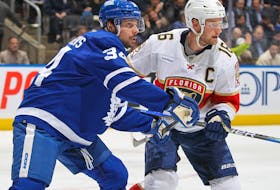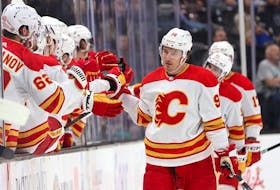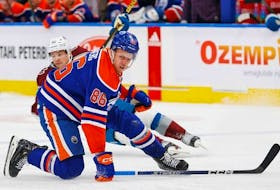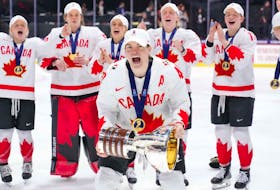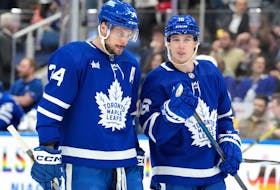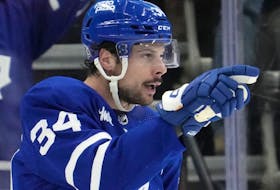There are three things to know about March 28, 1971, in no particular order: It was the first time the Vancouver Canucks scored more than 10 goals in a game, it was the night that confirmed that the Montreal Canadiens would be drafting first overall in that year’s amateur draft and it was the best night of Wayne Maki’s lamentably short career.
The Canucks hammered the California Golden Seals 11-5 that night, on the back of Maki’s lone NHL-career hat trick.
By losing that night, the hapless Golden Seals guaranteed that they would finish last in the league.
That, of course, meant they held the first overall pick in that June’s draft … except, of course, they had already traded the pick away to the Montreal Canadiens.
How the Canadiens found themselves in possession of the Seals’ first round pick was simple: Habs GM Sam Pollock made a shrewd bet in May 1970 that California would be the league’s worst in 1970-71 and shipped middling prospect Ernie Hicke plus one of Montreal’s three first-round picks in the 1970 amateur draft — which was used to select Chris Oddleifson (who would go on to play for and captain the Canucks) — in exchange for the Seals’ first pick in 1971, plus Francois Lacombe, a defenceman who would go on to play for years in the World Hockey Association.
Pollock had written the 1967 expansion draft rules and came to understand, before just about anyone else, how the draft could be mined to find future stars.
Guy Lafleur and Marcel Dionne were seen as the standout prospects for that ’71 draft, even a year out. Le Démon Blond was the guy Pollock really wanted and he got him, partly because Maki sealed their fate.
“He loved to play,” Maki’s widow, Beverly, said this week from her home in West Vancouver. There were seven other kids in his family, six of them brothers.
“I guess he had to fight for everything.”
Maki had been a Chicago Blackhawks (or “Black Hawks” at that time) minor leaguer before the St. Louis Blues picked him up for a cup of coffee in 1969-70. The Canucks picked him up in the 1970 expansion draft and he found a home.
He played on the Canucks’ first line alongside captain Orland Kurtenbach and Murray Hall, tallying 63 points in 78 games.
“He was a good skater with a helluva shot,” his older brother Chico, who also played in the NHL, told Postmedia in 2014 . “He wasn’t afraid. He’d take on the big guys. He fought them. Not like some guys.”
“He had guts,” former Canucks broadcaster Jim Robson recalled. “Unfortunately, sometimes you’re always remembered for only one thing.”
While with St. Louis the season before, Maki got involved in a pre-season stick-swinging incident with Boston Bruins tough guy Ted Green that sent Green to hospital with a fractured skull.
Green would miss that entire 1969-70 season, but returned in time to face Maki and his new team the next year.
“Ted Green was a tough player, but he would spear guys and he had speared Maki,” Robson recalled. “Maki swung his stick back to defend himself.”
Both players were charged with assault — both were acquitted — and both were suspended by the league.
“The first time we went into Boston, man did they run him hard, they really ran Maki hard,” Robson said. “Unfortunately, they remember him for that.”
Maki had dealt with health problems since he was a kid, but the sudden diagnosis of a brain tumour in his final season of 1972-73 with the Canucks at age 28 still came as a shock.
Stricken with debilitating headaches, he was sent home from a mid-season road trip. Doctors in Vancouver discovered the cancerous growth, gave him six months to live and quickly operated to remove the tumour.
He lived for another 17 months.
“Even though he was sick and dying, he just loved it,” Beverly recalled. “He loved to golf, he loved his family, he loved his neighbours.”
After he passed away, Beverly and her two young kids, Stephanie and Wayne Jr., started receiving all kinds of gifts and letters from fans. The Canucks Alumni helped out in the years that followed, both with funds for Stephanie and Wayne’s education — Stephanie went on to be a school teacher, Wayne a chef — and help in renovating her house.
But two gifts stand out: Portraits of Wayne in his Canucks uniform, one crocheted, the other needlepoint.
Beverly has no idea who made them, but they remain cherished items.
“I framed them right away and hung them on my wall. I’m looking at them right now, actually,” she said. “It was very touching.”
As for the connection between Wayne’s greatest game and Montreal’s good fortune, she knew that one very well.
“I do think it was destiny,” she said. “It’s karma.”
As the Canucks Celebrate their 50th season we’re looking back at the moments that stand out as the biggest in franchise history on the ice and off, good, and a few bad. We will highlight the top moments from the 1970s through November, the ’80s in December, the ’90s in January, the ’00s in February and the ’10s in March. If you have any great memories of where you were when your favourite moments happened, or what they meant to you, send them to [email protected]
CLICK HERE to report a typo.
Is there more to this story? We’d like to hear from you about this or any other stories you think we should know about. Email [email protected] .
Copyright Postmedia Network Inc., 2019


